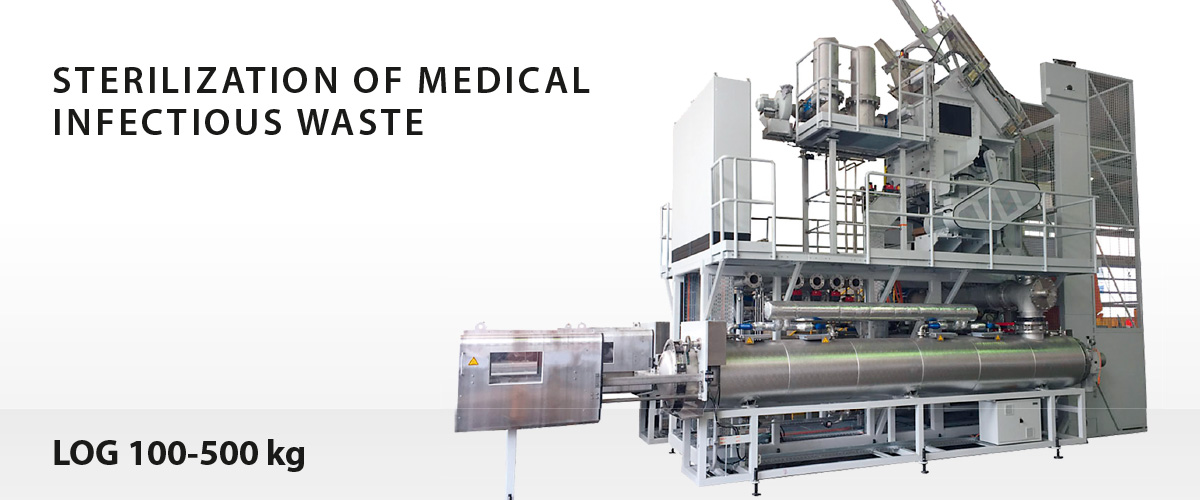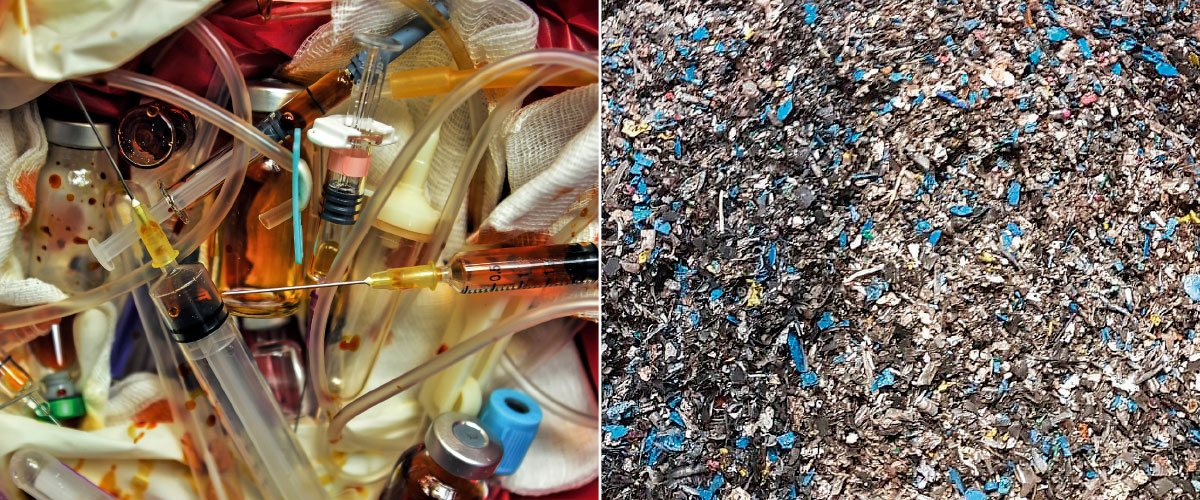STERILIZATION OF INFECTIOUS MEDICAL WASTE AND AIRLINE CATERING WASTE
Neuweilers LOG 100 for sterilization of infectious hospital waste
Sterilization of medical infectious waste. The LOG 100 from Neuweiler is an innovative and high-performance technology for the treatment of infectious risk and related waste (DASRI) by sterilization and banalisation. One of the most efficient technologies for waste is offered by the LOG 100 from Neuweiler.
According to the international sterilization standard the LOG 100 sterilizes at 138° C and a pressure of 3.5 bar.
To optimize the result, the waste is pre-shredded. At the beginning and end of the process, a vacuum is created. These features guarantee treatment at the heart of hazardous waste. The world’s leading benchmark for public health and the fight against epidemics is the German Robert Koch Institute in Berlin, where the machine is listed.
The LOG 100 has been tested and optimized under difficult working conditions in collaboration with some of Europe’s leading waste management companies in Germany and Italy for years. This experience combined with the relevance of German-speaking Swiss engineering makes a machine with a high quality finish. This makes the LOG 100 the best choice for a reliable investment in the long term. The return on investment is fast and the profit of the investor is assured. The benefit for our environment is indisputable. The LOG 100 helps preserve the environment and combat the spread of disease and epidemics.
The unit works fully automatic and needs only one person for running. The already simple maintenance is made easier with technical assistance that can be provided by the manufacturer Neuweiler via an integrated modem connection.
“Incineration and open burning of medical waste are the main sources of dioxins in health care and a major source of mercury pollution. […] Many health and environmental problems related to waste incineration have led to the widespread use of waste treatment technologies that do not use incineration in health facilities around the world.”
UNDP, Global Project medical waste management, UN 2008







